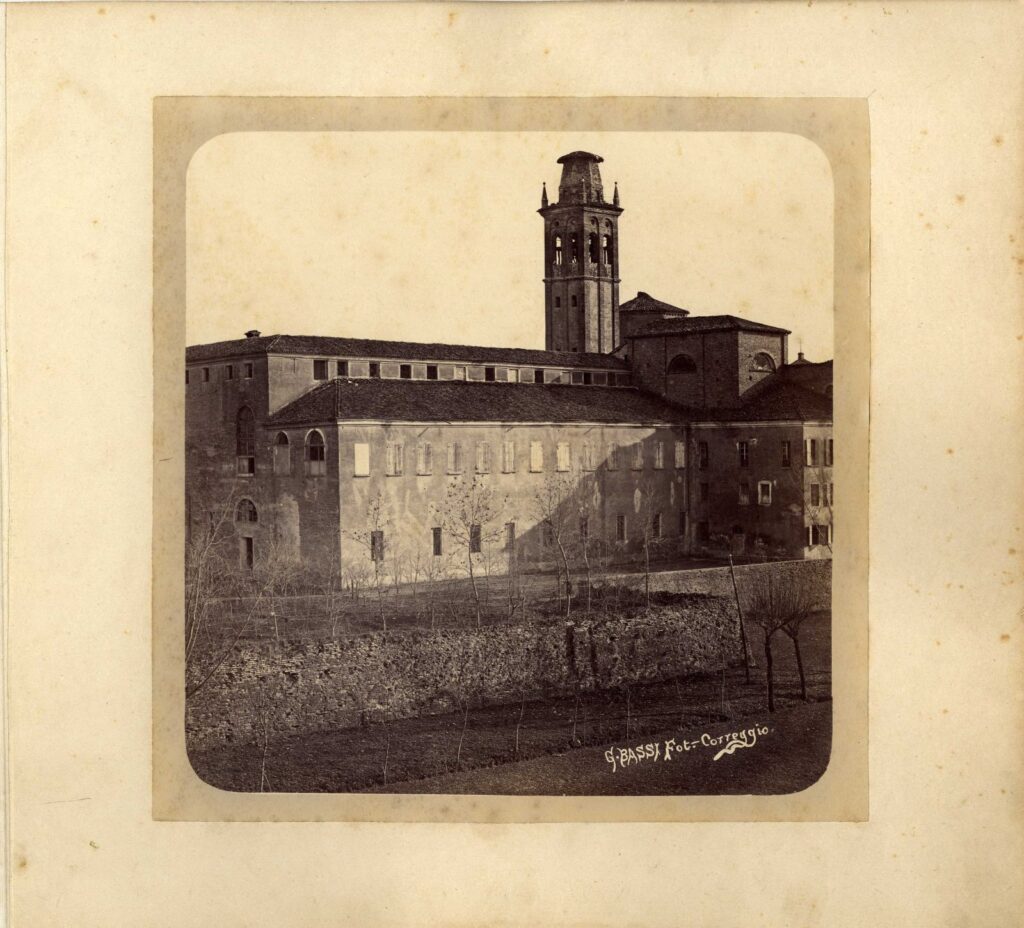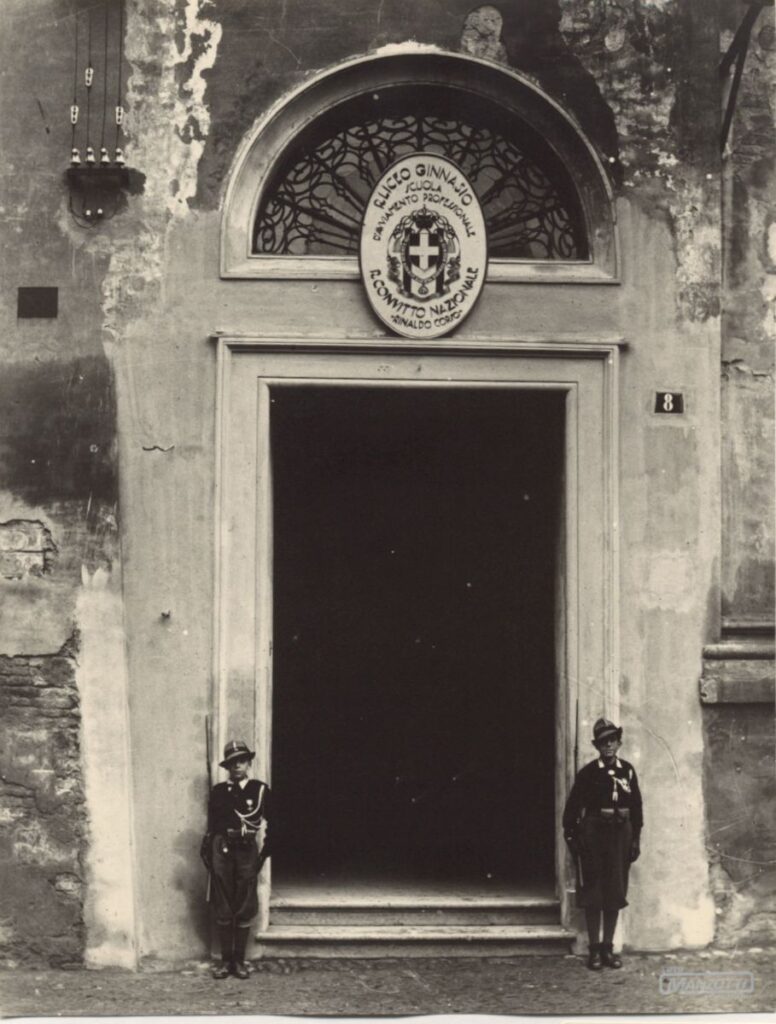Convitto Nazionale “Rinaldo Corso”
XVI secolo


Nel 1567, dopo la demolizione per cause belliche del precedente convento, i Padri Domenicani ne iniziarono la ricostruzione entro le mura cittadine. La presenza del complesso conventuale, sorto grazie anche alla munificenza del Cardinale Girolamo Bernieri, comportò alla metà del Seicento, il rinnovamento su progetto dell’architetto e scenografo reggiano Gaspare Vigarani, di un intero quartiere con la demolizione di alcune case e l’apertura della strada antistante. Dal XVII secolo il convento ospitò anche un noviziato. Nel 1783, soppresso il convento, subentrarono ai Domenicani i Chierici Regolari delle Opere Pie, noti anche come Scolopi, già presenti a Correggio fin dal 1722, che vi gestirono una scuola per giovani. Dopo importanti lavori, nel 1790 il convento divenne sede delle scuole pubbliche cittadine e del Collegio Civico Ducale. Cessata, ancora per soppressione, la presenza scolopiana nel 1810, il collegio riaprì nel 1819 affidato ai Padri Oblati che fino al 1840 vi tennero le scuole e un Seminario. Dopo alterne vicende, nel
1869 passò definitivamente al Comune di Correggio, per essere infine convertito nel 1888 in Convitto Nazionale, qualifica che mantiene tuttora. Oggi è sede di istituti scolastici dell’obbligo e superiori.
In 1567, after an earlier monastery had been destroyed in wartime, the Dominican monks began rebuilding it inside the city walls. In the mid-17th century, the presence of this monastery complex, partially built thanks to the largesse of cardinal Girolamo Bernieri, led to the remodelling of an entire quarter under the oversight of Reggio-Emilia architect and theatrical designer Gaspare Vigarani, who tore down several houses and opened up the street in front. Starting in the 17th century, the monastery also hosted a novitiate house. In 1783, when the monastery was abolished, the Dominicans were replaced by the Piarists, or Scolopi Fathers (Chierici Regolari delle Opere Pie), who had been in Correggio since 1722 and who used it to run a school for boys. In 1790, after major renovations, the monastery became the home of the city’s public schools and of the Collegio Civico Ducale ( Ducal Boarding School). When the Piarists left in 1810 again, because the order had been abolished, the boarding school reopenedin 1819, under the management of the Oblates, who ran schools and a Seminary there until 1840. After many vicissitudes, it definitively became the property of the City of Correggio in 1869 and, in 1888 , it was turned into a state boarding school, the “Convitto Nazionale”, a name it still bears nowadays. It presently houses mandatory primary and secondary schools.

Ultimo aggiornamento
29 Aprile 2025, 15:31
 Museo Il Correggio
Museo Il Correggio 